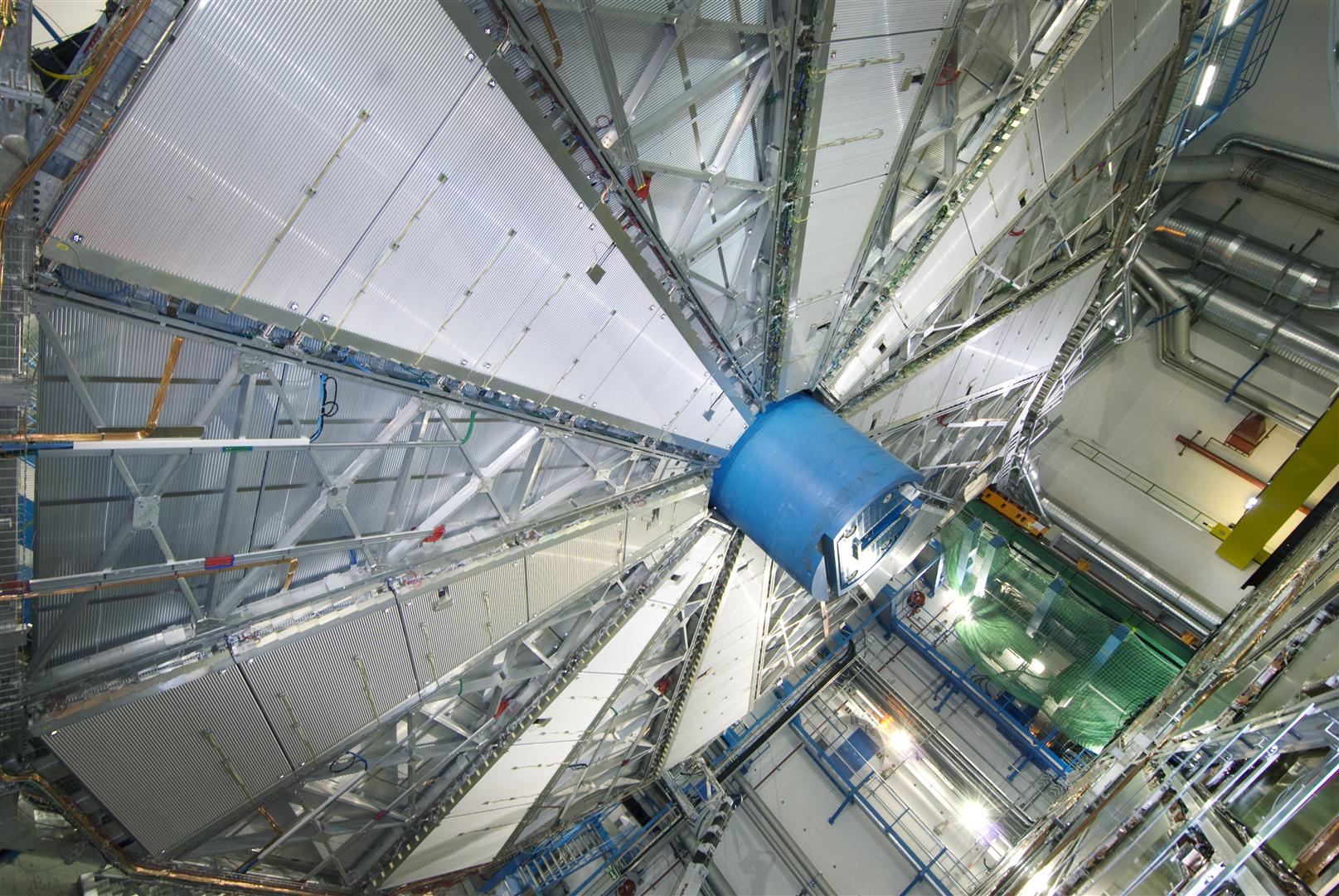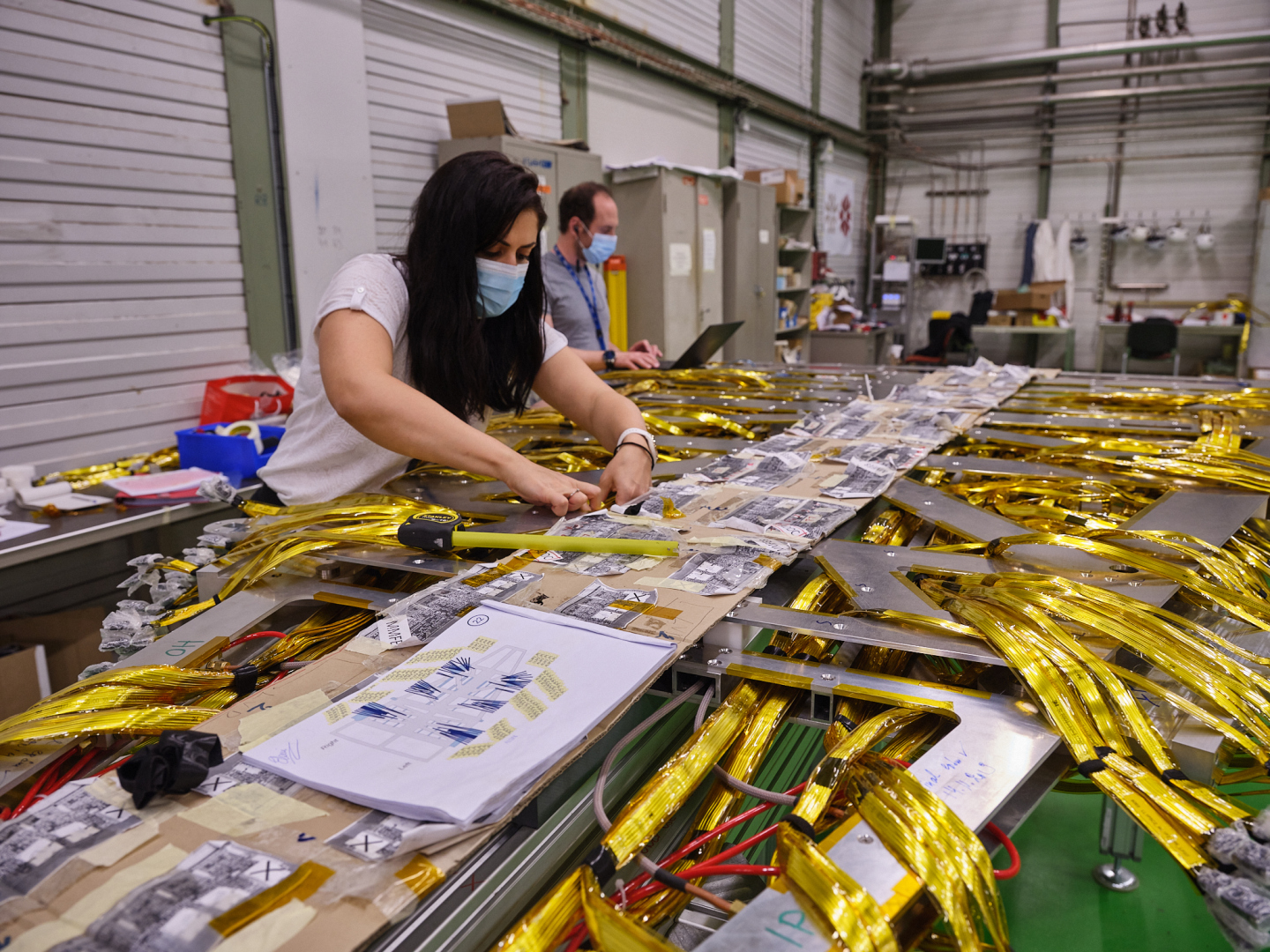ATLAS delivers most precise luminosity measurement at LHC
24 January 2023 | By
When the LHC is operating, more than one billion proton-proton (pp) interactions take place in the ATLAS experiment every second. But how many exactly? Critical to every ATLAS analysis is a high-precision measurement of the luminosity, which quantifies the total number of pp interactions in a given dataset. It allows physicists to evaluate the probabilities of interesting processes occurring and to predict background rates.
The ATLAS Collaboration has just released its most precise luminosity measurement to date. They studied four years of measurements (2015-2018), covering the entire Run 2 of the LHC to assess the amount of luminosity delivered to the ATLAS experiment.
Counting collisions
What exactly does such a measurement entail? When beams circulate in the LHC, they are arranged in “bunches” of more than 100 billion protons each. As two bunches cross each other, some of the protons will interact and create the collisions studied by ATLAS researchers. Determining how many interactions there are in each bunch crossing provides a measure of the luminosity. Its value depends on the number of protons per bunch, how tightly squeezed the proton bunches are, and the angle at which the bunches cross. The luminosity also depends on the number of colliding proton bunches in each beam.

ATLAS has several detectors that are sensitive to the number of particles produced in proton interactions, and the average number of produced particles is proportional to the average number of pp interactions per bunch crossing. It can therefore be used to measure the luminosity. Researchers can use this average to monitor the luminosity (also denoted instantaneous luminosity) in real time during data-taking, and to measure the integrated luminosity over specific time periods.
One of the main luminosity-sensitive detectors in ATLAS is LUCID-2, which was built specifically for such measurements. LUCID-2 consists of two sets of photomultiplier tubes (PMT) that surround the LHC beam pipe, 17 m on either side of the interaction point. The PMTs detect Cherenkov light emitted by charged particles coming from pp collisions when traversing the PMT’s fused silica windows. Two other ATLAS detector systems are used to measure the luminosity in a complementary way: the Inner Detector, which counts the number of charged particle tracks, and the Calorimeters, which monitor the energies deposited by passing particles.
While all these detectors provided relative measures of the luminosity during data taking, the measurement of the absolute luminosity required a special LHC beam configuration that allows detector signals to be calibrated. Once a year, LHC proton beams are displaced from their normal position in the horizontal and vertical planes while ATLAS records the counts in the luminosity detectors. An example of such a “scan curve” is shown in Figure 1. This method is called a van der Meer (vdM) beam separation scan, named after Nobel Prize winner Simon van der Meer, who developed the idea in the 1960s for application at CERN’s Intersecting Storage Rings. The vdM scan allows researchers to map out the beam size and measure how densely the protons are packed in the bunches. With that in hand, researchers can calibrate their detectors to the absolute luminosity scale.
Record result

Working in close collaboration with ATLAS researchers, LHC experts carried out van der Meer scans under low-luminosity conditions, with an average of about 0.5 proton interactions per bunch crossing and very long gaps between the bunches. For comparison, the LHC typically operates with 20-50 interactions per bunch crossing, and with bunches closer together in a train structure. The calibration from the vdM scan is therefore extrapolated to the LHC’s normal running conditions. As the LUCID-2 detector is sensitive to these differences, its measurements were calibrated with a special luminosity-sensitive algorithm that exploited the well-understood behaviour of the track-counting measurement between the vdM and physics conditions.
Several effects can influence ATLAS’ luminosity measurements, with typical magnitudes of 0.1-0.5%. ATLAS physicists carefully evaluated the size of all such systematic effects. One example affecting the calibration is the fact that the vdM method assumes that the particle densities in each bunch can be split (or “factorised”) into independent horizontal and vertical components. This is not entirely true and the effects of non-factorisation were carefully studied by observing the spatial distribution of the collision vertices formed from tracks reconstructed in the Inner Detector. Another example are beam-beam interactions where the electromagnetic force between colliding bunches affects their separation and characteristics in vdM scans. This effect was modelled mathematically and corrected for in the scan data.
Finally, ATLAS’ luminosity detectors are sensitive to data-taking conditions that can vary during an operation period. Researchers monitored this by studying the stability of the calibration, for example by comparing the luminosity values from the different detectors, looking for variations over time. Such a comparison is shown in Figure 2.
Using this approach, ATLAS physicists determined the integrated luminosity of the full Run-2 dataset recorded by ATLAS and certified as good for physics analysis to be 140.1 ± 1.2 fb-1. With its uncertainty of 0.83% it represents the most precise luminosity measurement at a hadron collider to date. The result improves upon previous ATLAS measurements by a factor of 2 and is comparable to results achieved at the ISR experiments (0.9%). The methods developed for this measurement are crucial for the ongoing Run 3 of the LHC, and will enable researchers to achieve sub-percent-level precision in the future.
Learn more
- Luminosity determination in proton–proton collisions at 13 TeV using the ATLAS detector at the LHC (arXiv: 2212.09379, see figures)
- The new LUCID-2 detector for luminosity measurement and monitoring in ATLAS (Avoni et al., JINST 13 (2018) P07017)
- ATLAS delivers most precise luminosity measurement at the LHC, CERN update (2023)
- Luminosity? Why don’t we just say collision rate?, CERN update (2011)
- Counting collisions, ATLAS News (2016)




